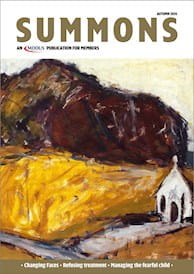MOST UK physicians including GPs and accident and emergency doctors will have had between two and 12 days ophthalmology attachment during their entire undergraduate training1, leaving them inexperienced and wary of dealing with patients presenting with eye problems.
Red eye is a common presenting complaint in patients attending A&E, optometrists and GPs and has been reported to account for 0.9–1.5 per cent of GP consultations.2 Making the correct diagnosis can be difficult for non-experts, given the diversity of possible diagnoses ranging from self-resolving bacterial conjunctivitis to sight-threatening acute angle closure glaucoma (AACG).
There are many excellent ophthalmology textbooks which give the novice the appropriate knowledge, however very few indicate how to apply it. For this reason I have developed along with colleagues a series of diagnostic algorithms (Edinburgh Diagnostic Algorithms) for the three most commonly encountered scenarios: red eye(s), visual loss and diplopia.
Diagnostic frameworks
These diagnostic algorithms allow the inexperienced clinician (in ophthalmological terms) to start to utilise and build upon their existing knowledge by consulting a framework which represents the thought processes of their more experienced colleagues. Algorithms are, therefore, simply a user-friendly version of these diagnostic and/or treatment thought processes.
Algorithms are always a compromise between having enough detail to cover the most commonly encountered diagnoses while remaining simple enough to use. They rely upon the clinician being able to clarify the history and elicit the clinical signs which act as signposts on the road to diagnostic nirvana. How successful are the Edinburgh Diagnostic Algorithms?
Improved accuracy
Baseline diagnostic accuracy for non-ophthalmologists with patients presenting with AACG has been demonstrated as 21 per cent (GPs) to 64 per cent (A&E),3 and 44 per cent for iritis (GPs).4 When equally inexperienced observers (GPs 35 per cent, A&E nurse practitioners 23 per cent, opticians 18 per cent) assessed patients presenting with red eye(s) using the Edinburgh Red Eye Diagnostic Algorithm, the diagnostic accuracy for AACG rose to 100 per cent (4/4 cases) and for iritis it rose to 82 per cent (9/11 cases).5
These are the first diagnostic eye algorithms to be subjected to scientific analysis and demonstrate significant improvements in accuracy by inexperienced clinicians in the three most commonly encountered ophthalmic scenarios. Take diplopia as another example: the baseline diagnostic accuracy of non-ophthalmologists including optometrists, hospital doctors and GPs was 24 per cent, indicating a need for a diagnostic aid. The overall diagnostic accuracy of the Edinburgh Diplopia Algorithm is 82 per cent, even when used by very inexperienced clinicians.
The diagnostic improvement resulting from the use of these algorithms should result in more accurate triage of patients referred to the hospital eye service. This should help prevent delayed presentations of serious eye conditions and reduce morbidity from delayed treatment.
Access algorithms
A number of open access learning tools including downloadable copies of the five diagnostic algorithms and narrated lectures accompanying the algorithms are available on a dedicated Edinburgh University web page.
Dr Mark Wright is a consultant ophthalmologist and honorary senior lecturer at Edinburgh University
REFERENCES
- Welch S, Eckstein M. Ophthalmology teaching in medical schools: a survey in the UK. Br J Ophthalmol 2011; 95: 748–749.
- Dart JKG. Eye disease at a community health centre. Br Med J 1986; 293: 1477–1480.
- Siriwardena D, Arora AK, Fraser SG, McClelland HK, Claoue C. Misdiagnosis of acute angle closure glaucoma. Age Ageing. 1996;25(6):4213.
- Sheldrick JH, Vernon SA, Wilson A. Study of diagnostic accord between general practitioners and an ophthalmologist. BMJ.1992; 304:10961098.
- Accuracy of the Edinburgh Red Eye(s) Algorithm. Eye 2015; 29: 619624.
This page was correct at the time of publication. Any guidance is intended as general guidance for members only. If you are a member and need specific advice relating to your own circumstances, please contact one of our advisers.
Read more from this issue of Insight

Save this article
Save this article to a list of favourite articles which members can access in their account.
Save to library